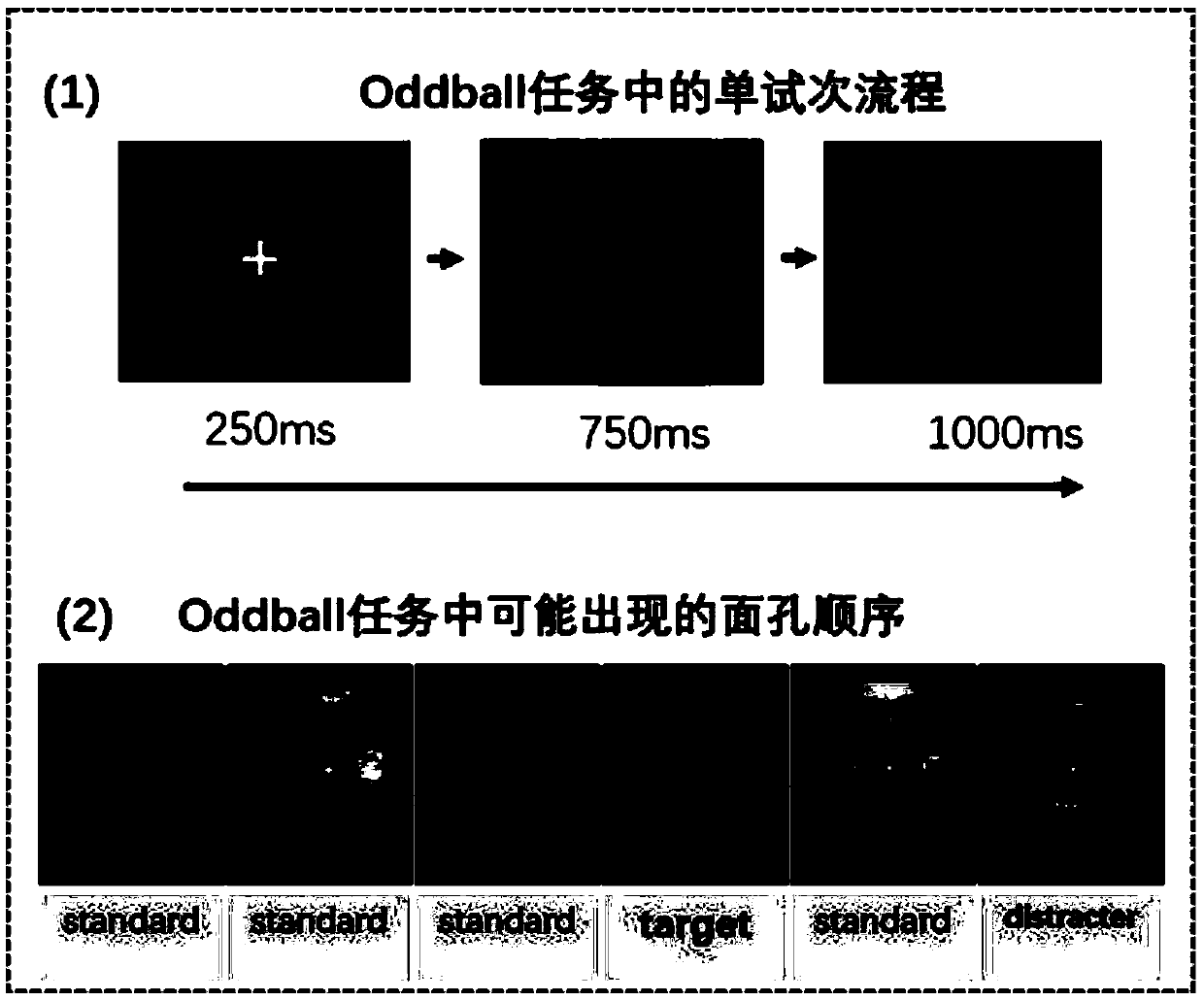Attention regulating method based on transcranial direct current stimulation
An attention, direct current technology, applied in the field of neural regulation and attention evaluation, can solve the problems of unclear regulation effect, rare, lack of objective evaluation indicators of regulation effect, etc., and achieve considerable social benefits.
- Summary
- Abstract
- Description
- Claims
- Application Information
AI Technical Summary
Problems solved by technology
Method used
Image
Examples
Embodiment 1
[0039] A method of attention regulation based on transcranial direct current stimulation, see figure 1 , the method includes the following steps:
[0040] 101: Write the stimulation interface with Psychtoolbox, present the interface through the computer monitor, collect and save the EEG signal and behavioral data under the Oddball task state;
[0041] 102: Perform tDCS neural regulation on the EEG signal, and further collect data after the regulation;
[0042] 103: Preprocess the EEG data before and after regulation by downsampling, filtering, data segmentation, etc., and then use the coherent average algorithm to calculate the P300 difference between positive and negative emotions. index;
[0043] 104: Calculate the classification accuracy rate under positive and negative emotions through behavioral data, and extract the emotion misclassification rate as the regulation effect;
[0044] 105: Compare the changes of electrophysiological indicators and behavioral indicators befo...
Embodiment 2
[0047] Combine below figure 1 , figure 2 , and specific examples further introduce the scheme in embodiment 1, see the following description for details:
[0048] 1. Data collection
[0049] The Oddball task in the embodiment of the present invention requires the subject to press buttons to respond to positive emotions or negative emotions in the experiment. The experiment included 6 bloks (modules), of which 3 bloks required subjects to press buttons on faces with positive emotions, and 3 bloks needed to make button responses to faces with negative emotions. Each blok was neutral, positive, and negative. The faces of the sexual emotions alternate randomly in a ratio of 7:1.5:1.5.
[0050] The flow of a single trial in the stimulus interface and the sequence of faces that may appear in the stimulus are as follows figure 2 As shown, during the experiment, the subjects sat on a chair about one meter away from the monitor, stared at the screen and followed the prompts to co...
PUM
 Login to View More
Login to View More Abstract
Description
Claims
Application Information
 Login to View More
Login to View More - R&D
- Intellectual Property
- Life Sciences
- Materials
- Tech Scout
- Unparalleled Data Quality
- Higher Quality Content
- 60% Fewer Hallucinations
Browse by: Latest US Patents, China's latest patents, Technical Efficacy Thesaurus, Application Domain, Technology Topic, Popular Technical Reports.
© 2025 PatSnap. All rights reserved.Legal|Privacy policy|Modern Slavery Act Transparency Statement|Sitemap|About US| Contact US: help@patsnap.com



